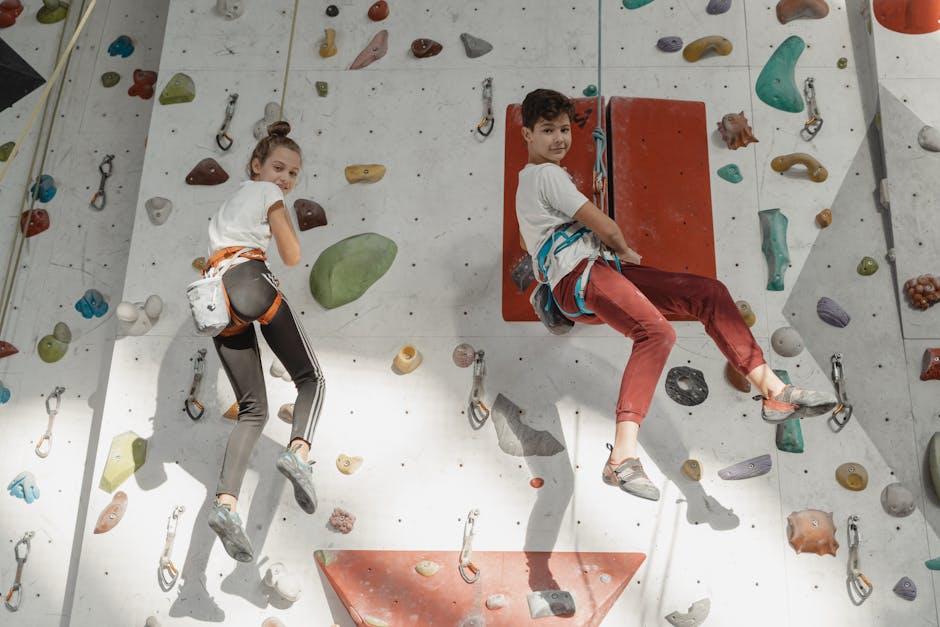In an era where sedentary lifestyles are increasingly prevalent, setting up a family fitness challenge emerges as an innovative solution to promote health and well-being across generations. By combining physical activity with a sense of camaraderie and friendly competition, families can foster healthier habits while strengthening their bonds. This article provides a comprehensive guide to creating an effective family fitness challenge, analyzing the key components that contribute to its success. From setting achievable goals and selecting suitable activities to tracking progress and maintaining motivation, we will explore strategies that ensure the challenge is both enjoyable and impactful. With a confident approach, this guide aims to equip families with the tools necessary to embark on a transformative journey towards a healthier lifestyle together.
Identifying Goals and Objectives for Your Family Fitness Challenge
When embarking on a family fitness challenge, establishing clear goals and objectives is crucial to ensure success and maintain motivation. Start by involving all family members in the goal-setting process to foster a sense of ownership and commitment. Consider the varying fitness levels, interests, and ages within the family to create inclusive and achievable targets. Identify both short-term and long-term goals, which can range from improving cardiovascular health to participating in a local fun run together.
Crafting objectives that are Specific, Measurable, Achievable, Relevant, and Time-bound (SMART) can significantly enhance your family’s commitment to the challenge. Some ideas include:
- Weekly Activity Targets: Aim for a collective 150 minutes of moderate aerobic activity per week.
- Skill Development: Learn a new sport or fitness activity each month.
- Nutritional Goals: Introduce one new healthy recipe each week.
Regularly review and adjust these objectives to keep the challenge dynamic and engaging. By doing so, your family not only works towards better fitness but also strengthens bonds through shared achievements.

Designing Engaging and Inclusive Activities for All Ages
Creating activities that captivate and accommodate participants of all ages requires a blend of creativity and strategic planning. To ensure engagement and inclusivity, consider these essential elements:
- Flexibility: Design challenges that allow for different skill levels. For instance, a walking challenge can be adjusted to a running or cycling version for those seeking a more intense workout.
- Variety: Incorporate a mix of activities, such as yoga, dance, or strength training, to cater to diverse interests and abilities. This ensures everyone finds something they enjoy.
- Goal Setting: Establish clear, attainable goals that motivate participants. Whether it’s a collective step count or individual milestones, having objectives keeps the challenge focused and rewarding.
By thoughtfully crafting these activities, you foster an environment where all family members can participate meaningfully, ensuring the fitness challenge is both enjoyable and beneficial for everyone involved.

Creating a Structured Schedule to Maintain Consistency
One of the keys to a successful family fitness challenge is developing a well-structured schedule that everyone can follow. This schedule acts as a roadmap, ensuring that all family members are on the same page and can maintain consistency throughout the challenge. Start by identifying the optimal times for family workouts, considering factors like work commitments, school schedules, and existing extracurricular activities. This might involve setting aside specific days for different activities, such as cardio on Mondays and yoga on Wednesdays.
- Flexibility: Ensure that the schedule allows for some flexibility to accommodate unexpected events or changes in availability.
- Variety: Incorporate a mix of activities to keep everyone engaged and motivated, from hiking trips to home workout sessions.
- Accountability: Use shared digital calendars or physical planners to track progress and remind everyone of upcoming fitness commitments.
By establishing a clear, adaptable schedule, families can foster a sense of unity and shared purpose, making the fitness challenge not just a goal but a rewarding journey for everyone involved.

Implementing Tracking and Reward Systems for Motivation
Incorporating tracking and reward systems into your family fitness challenge can significantly boost motivation and engagement. By utilizing tools like fitness apps or wearable devices, families can easily monitor progress and set tangible goals. These tools provide real-time feedback and visual progress reports, which can be incredibly motivating. Consider using apps that offer family-friendly features, allowing each member to see how others are doing, fostering a sense of healthy competition and camaraderie.
To further enhance motivation, establish a reward system that acknowledges milestones and achievements. Rewards don’t have to be extravagant; they can be simple yet meaningful. Here are some ideas to consider:
- Weekly Rewards: Treat the family to a healthy homemade meal or a movie night.
- Milestone Achievements: Offer small gifts like fitness gear or a day out at a local park.
- Grand Prize: Set a long-term goal and reward the family with a weekend getaway or a special outing once it’s achieved.
Implementing these systems creates a structured yet fun environment, transforming the fitness challenge from a chore into an exciting family adventure.



